Temple Treasures: A Journey Through Ahmedabad
Join us for a free walking tour of Ahmedabad, where you can explore its magnificent temples and rich history. Perfect for temple enthusiasts with 3 hours to spare!
Time
3 Hours
Stops
7 Places
Distance
4.1 km
Sidi Saiyyed Mosque
Known for its intricate stone lattice work, the Sidi Saiyyed Mosque is a stunning example of Indo-Islamic architecture and a symbol of Ahmedabad.
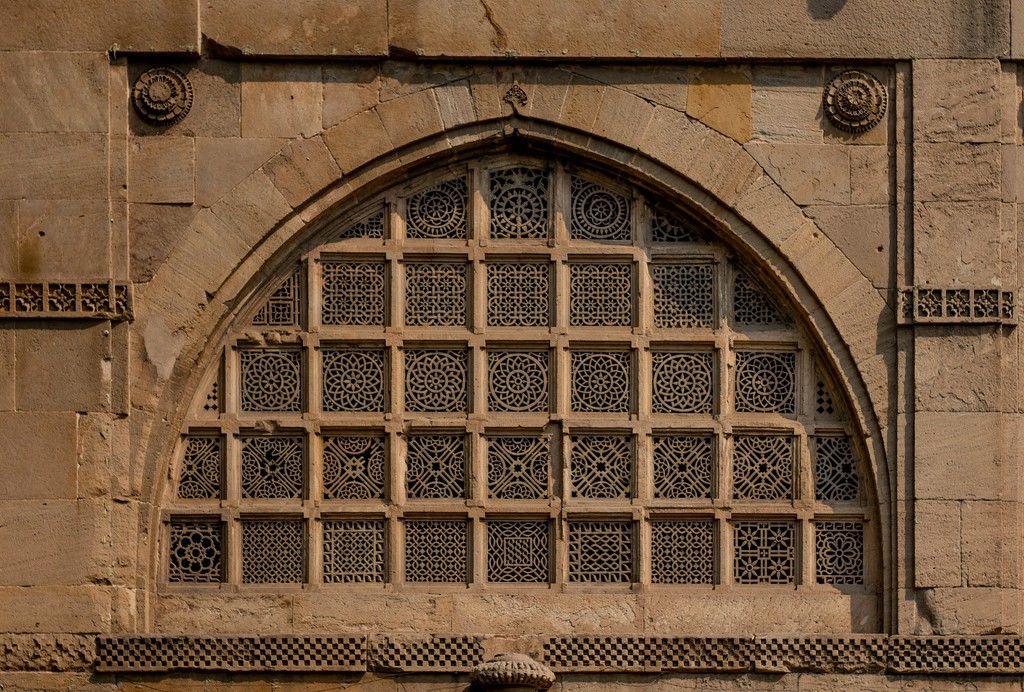
Sidi Saiyyed Mosque (Source: Google Maps)
The Sidi Saiyyed Mosque, built in 1573, is one of the finest examples of Indo-Islamic architecture in Ahmedabad. It is particularly famous for its stunning stone lattice work, known as 'jalis', which depict intricate designs of intertwining trees and foliage. The mosque was constructed by Sidi Saiyyed, a slave of the Sultan of Gujarat, and has become a symbol of the city. Its elegant arches and serene ambiance attract visitors and worshippers alike. The mosque's design reflects the cultural amalgamation of Hindu and Islamic styles, showcasing the artistic brilliance of the time. The Sidi Saiyyed Mosque is not just a religious site but also a historical monument, representing the rich heritage of Ahmedabad.
Bhadra Fort
Built in 1411, Bhadra Fort is a historical fort known for its beautiful arches and lush gardens, providing insights into the city's rich Mughal heritage.
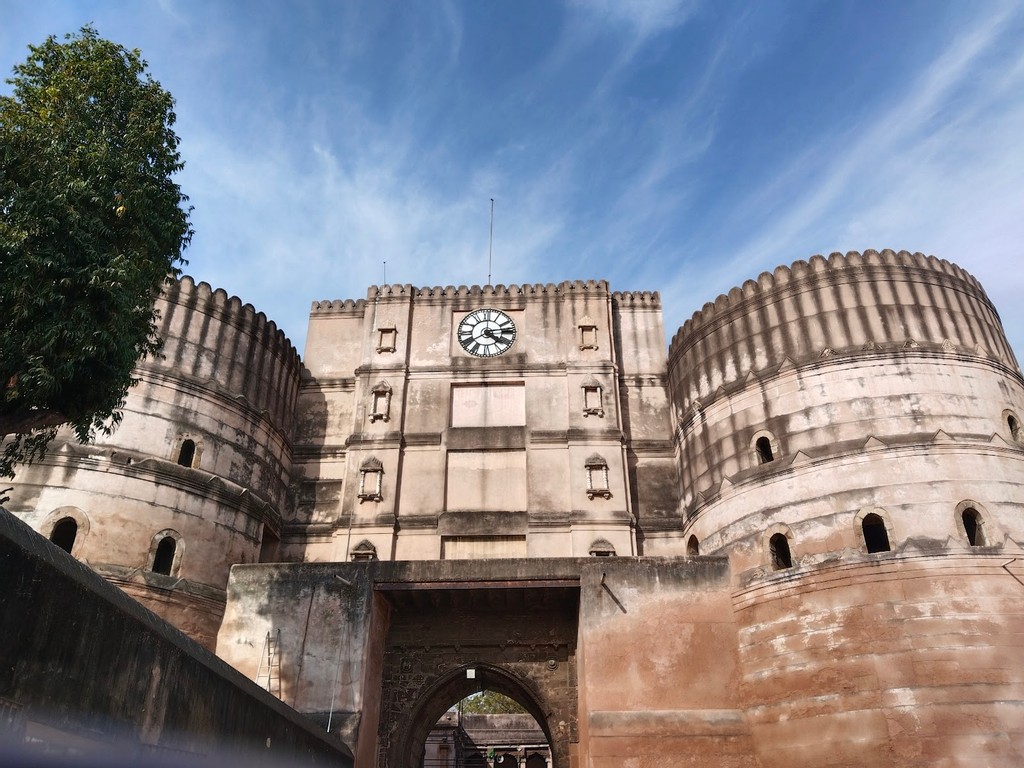
Bhadra Fort (Source: Google Maps)
Bhadra Fort, constructed in 1411 by Sultan Ahmed Shah, serves as a historical testament to Ahmedabad’s Mughal heritage. The fort is characterized by its impressive architecture, featuring beautiful arches and a series of lush gardens that add to its grandeur. Originally built as a royal residence, Bhadra Fort has witnessed numerous events in history, including battles and royal ceremonies. The fort's name is derived from the Hindu goddess Bhadrakali, and it houses a temple dedicated to her. Visitors can explore the fort's various structures, including the Bhadra Kali Temple and the beautiful entrance gate, which showcases intricate carvings. The fort stands as a reminder of the city's glorious past and offers a glimpse into the architectural advancements of the era.
Teen Darwaza
This iconic gateway, Teen Darwaza, is an architectural marvel and one of the longest and oldest gateways in Ahmedabad.
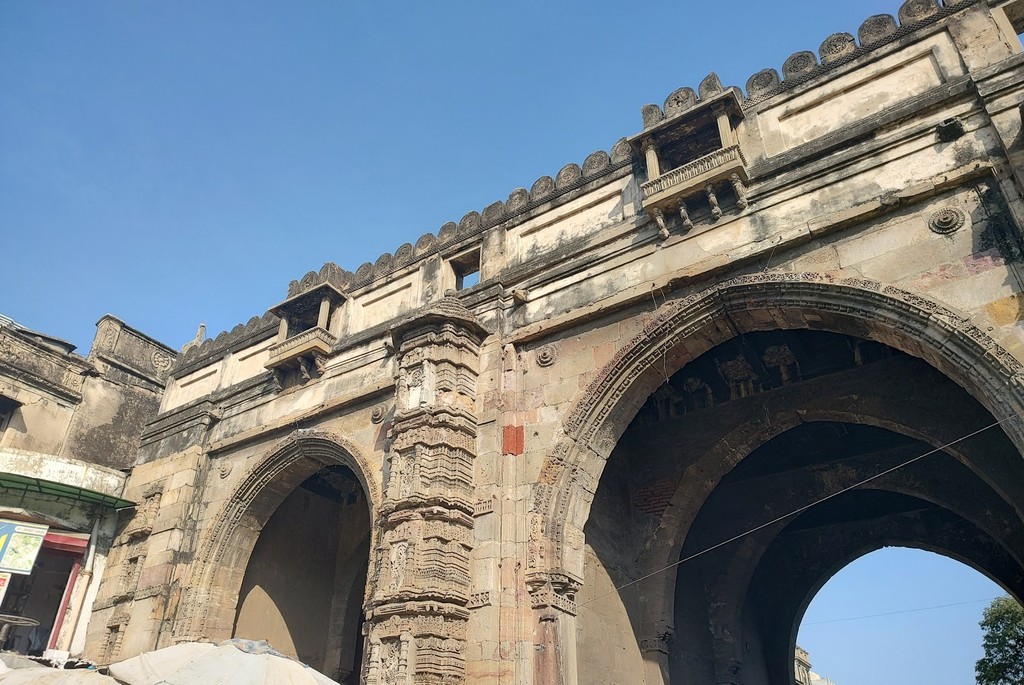
Teen Darwaza (Source: Google Maps)
Teen Darwaza, meaning 'Three Doors', is one of the oldest and most iconic gateways in Ahmedabad, dating back to the 15th century. The gateway was constructed during the reign of Sultan Ahmed Shah and served as a main entry point into the city. It is renowned for its architectural beauty, featuring intricate stone carvings and a grand structure that reflects the Indo-Islamic style. The three arches of the gateway are adorned with exquisite designs, showcasing the craftsmanship of that period. Teen Darwaza has historically been significant as it provided access to the royal palace and was a bustling marketplace. Today, it stands as a prominent landmark, attracting tourists and locals alike, who admire its historical significance and architectural brilliance.
Jama Masjid
Built in 1424, Jama Masjid is a magnificent mosque that showcases the blend of Hindu and Muslim architectural styles unique to Ahmedabad.
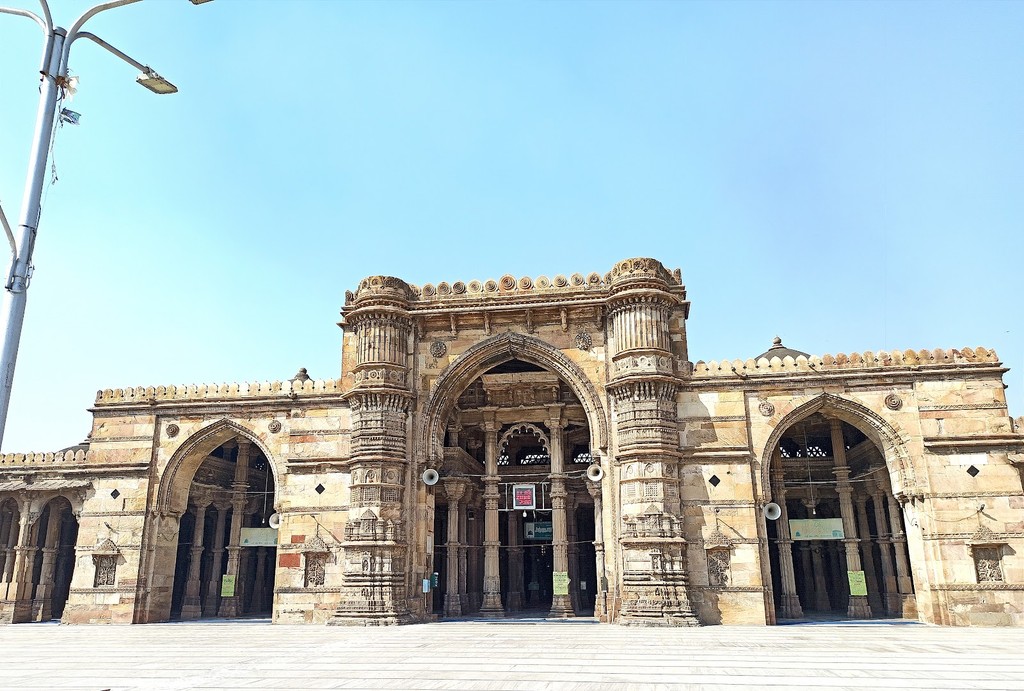
Jama Masjid (Source: Google Maps)
Constructed in 1424, Jama Masjid is one of the largest and most magnificent mosques in Ahmedabad, exemplifying the blend of Hindu and Muslim architectural styles. Built by Sultan Ahmed Shah, the mosque features an impressive courtyard that can accommodate thousands of worshippers. Its design incorporates elements from Hindu temples, such as intricate carvings and pillars, alongside traditional Islamic motifs. The mosque's striking domes and minarets dominate the skyline, making it a prominent landmark in the city. Jama Masjid is not just a place of worship; it is also an architectural marvel that attracts visitors with its serene ambiance and historical significance. The mosque hosts various religious events, drawing both devotees and tourists who wish to explore its rich heritage.
Manek Chowk
A bustling square in the heart of the old city, Manek Chowk is famous for its vibrant morning vegetable market and historical surroundings.
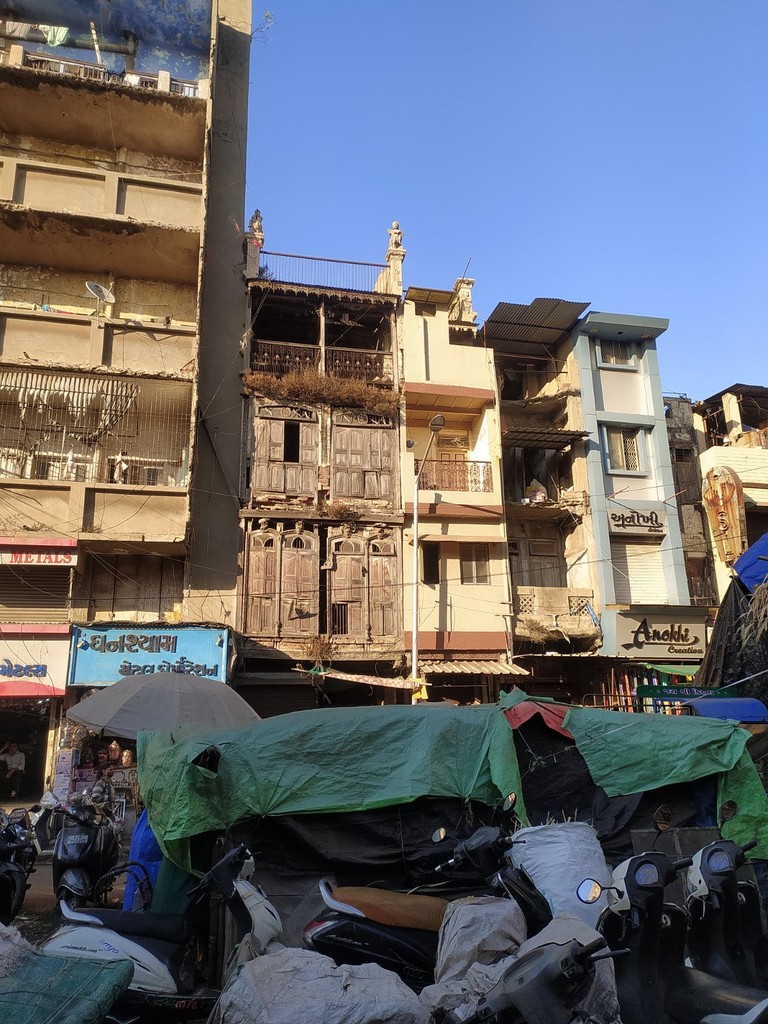
Manek Chowk (Source: Google Maps)
Manek Chowk is a vibrant square located in the heart of Ahmedabad’s old city, known for its bustling atmosphere and historical significance. Originally a vegetable market in the mornings, it transforms into a lively food hub in the evenings, offering a variety of local delicacies. The square is surrounded by historical buildings and landmarks, making it a cultural hotspot. Its name is derived from the Maneknath Temple, which is situated nearby, adding to the area's spiritual significance. The lively ambiance of Manek Chowk, combined with its rich history, makes it a popular destination for both locals and tourists. Visitors can enjoy not only the culinary delights but also the historical context that the square provides, encapsulating the essence of Ahmedabad's vibrant culture.
Swaminarayan Temple, Kalupur
This temple, dedicated to Lord Swaminarayan, is renowned for its intricate wood carvings and vibrant colors, offering a glimpse into the region's spiritual traditions.
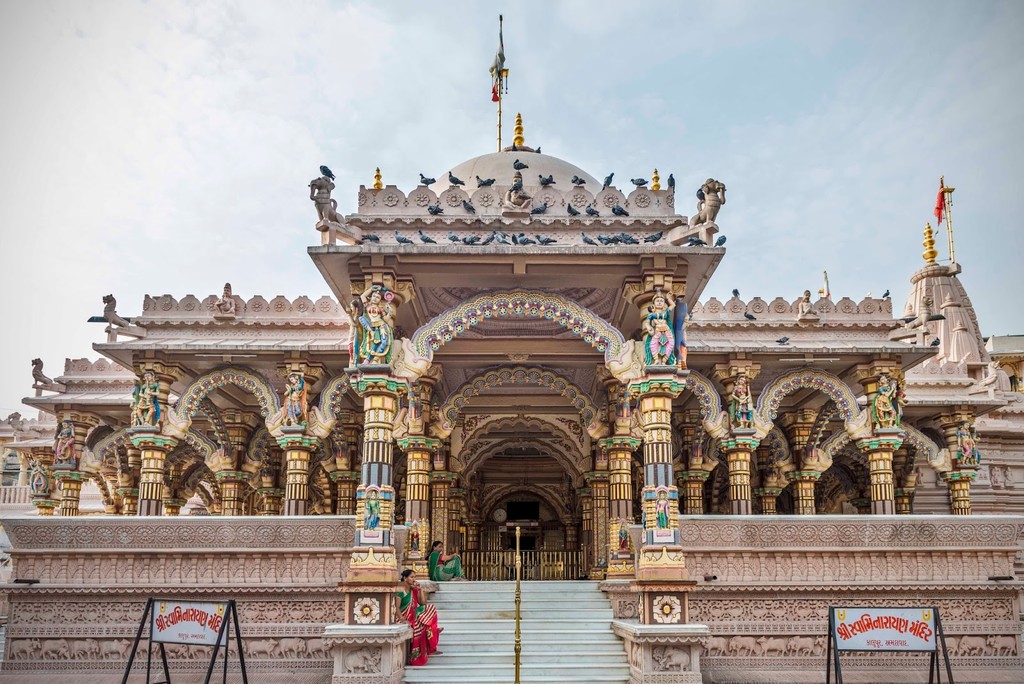
Swaminarayan Temple, Kalupur (Source: Google Maps)
Swaminarayan Temple in Kalupur is a significant religious site dedicated to Lord Swaminarayan, showcasing the rich spiritual traditions of the region. Established in the early 19th century, the temple is renowned for its intricate wood carvings and vibrant colors, which reflect the artistry of the time. The structure is adorned with beautiful sculptures and murals that depict various deities and scenes from Hindu mythology. The temple serves as a center for the Swaminarayan community and attracts thousands of devotees who come to offer prayers and seek blessings. The serene ambiance and exquisite architecture make it a must-visit site for those interested in exploring the spiritual heritage of Ahmedabad. The temple not only stands as a place of worship but also as a testament to the artistic and cultural richness of the region.
Hutheesing Jain Temple
Constructed in 1848, Hutheesing Jain Temple is a beautiful marble temple dedicated to the 15th Jain Tirthankara, showcasing exquisite craftsmanship.
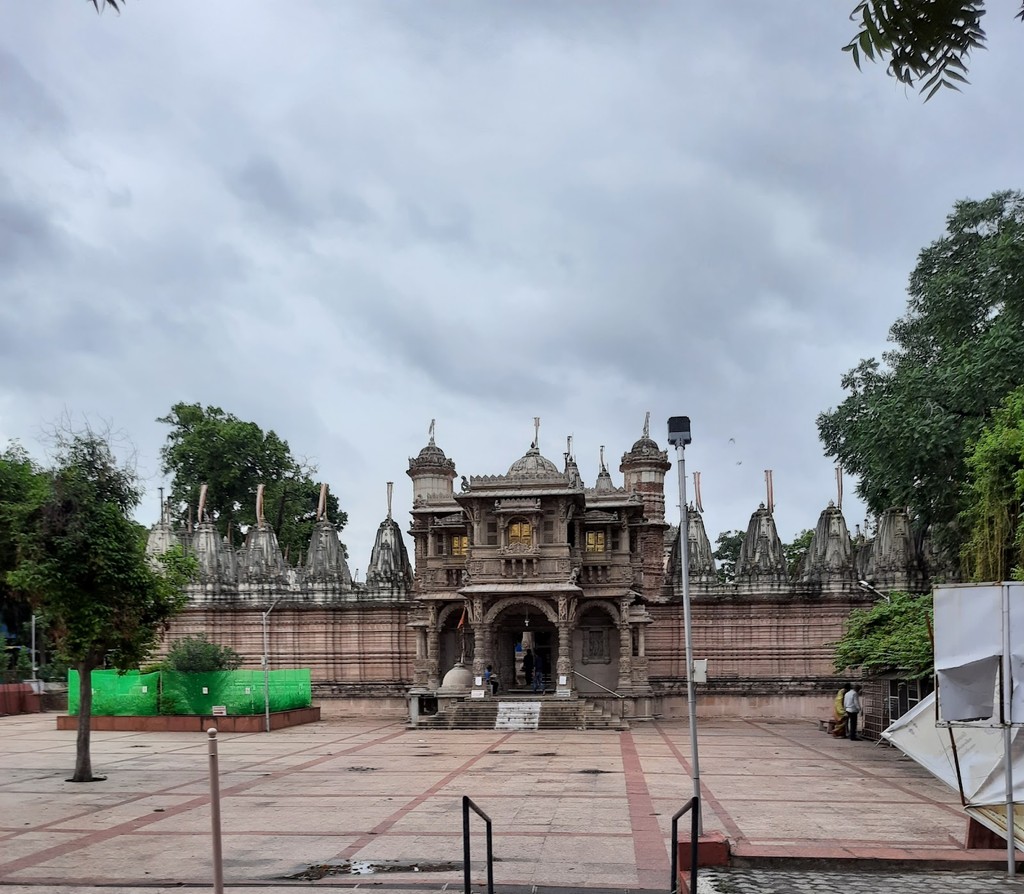
Hutheesing Jain Temple (Source: Google Maps)
Constructed in 1848, Hutheesing Jain Temple is a stunning marble temple dedicated to the 15th Jain Tirthankara, Dharmanath. This architectural masterpiece is known for its exquisite craftsmanship, featuring intricate carvings and detailed sculptures that tell stories of Jain philosophy and beliefs. The temple is an important pilgrimage site for Jains and showcases the devotion and artistry of the community. The main shrine houses a beautiful idol of Dharmanath, surrounded by detailed frescoes and ornate pillars. The temple's serene environment and architectural beauty attract visitors from all walks of life, making it a significant cultural landmark in Ahmedabad. Hutheesing Jain Temple stands as a symbol of the rich Jain heritage, reflecting the spiritual and artistic legacy of the region.

Your travels, your rules.
Create your own Free Walking Tours.
Set your preferences, distances and anything you want to do or see.
Completely free, no payment required.